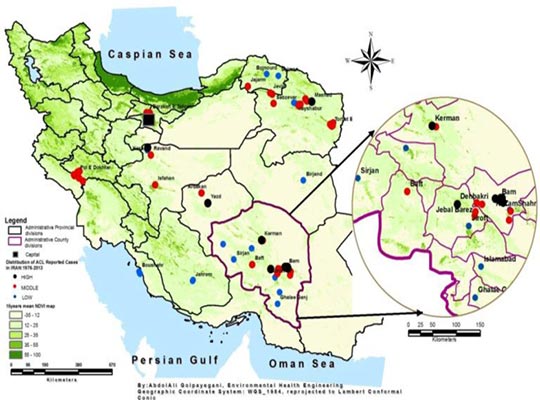Ecological study and risk mapping of visceral leishmaniasis in an endemic area of Iran based on a ge
Salahi-Moghaddam A, Mohebali M, Moshfae A, Habibi M, Zarei Z.
Geospat Health. 2010 Nov;5(1):71-7.
Abstract
Between 1998 and 2001, a total of 1,062 human cases of visceral leishmaniasis were reported from the rural district of Meshkin-Shahr in the mountainous, north-western Iranian province of Ardabil. In the summer of 2008, a cross-sectional study of dogs was conducted in this endemic area by randomly selecting 384 animals from 21 villages and testing them serologically for leishmaniasis. Villages, in which more than 10% of investigated dogs showed anti- Leishmania titres ≥ 1/320, were considered to be high-risk environments. Regression analysis showed no statistically significant correlation between topographic conditions and the prevalence of positive cases. However, when the results were compared with past meteorological records, a statistically significant positive correlation (P = 0.007) was found between the number of infected dogs with anti-Leishmania titres ≥ 1/640 and the number of days in a year with temperatures below 0 °C. While humidity showed an inverse correlation (P = 0.009) with the anti-Leishmania titres, a positive correlation (P <0.001) was found in relation to the amount of rainfall. Mapping of the areas at risk for kala-azar in the Meshkin-Shahr district supports the impression that the low temperatures prevalent in the Ardebil province constitute an important factor influencing the distribution of leishmaniasis there.


